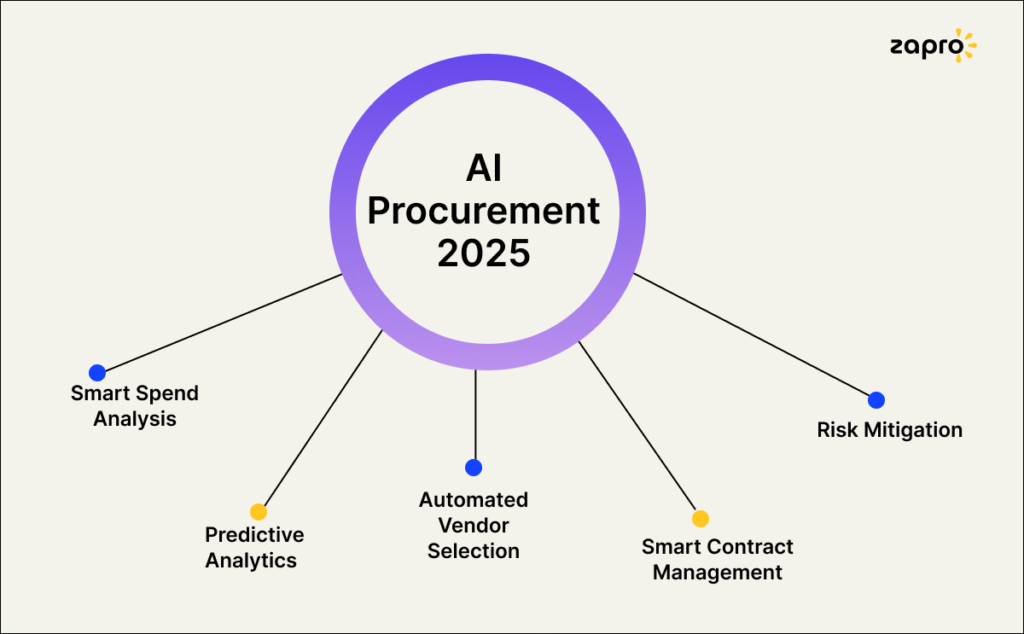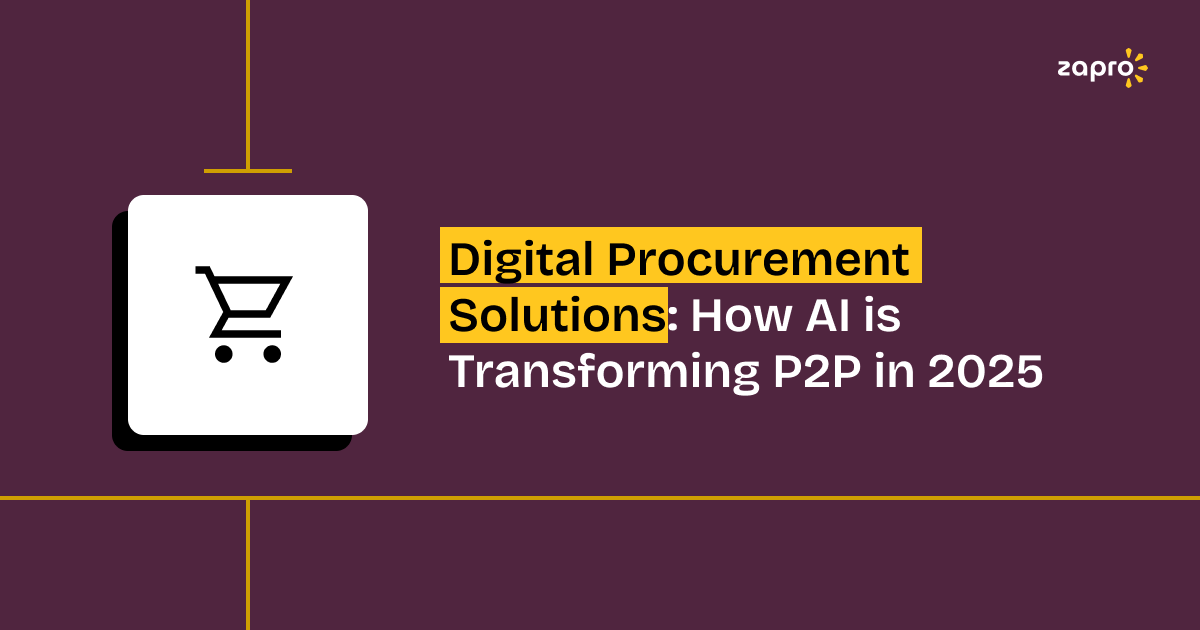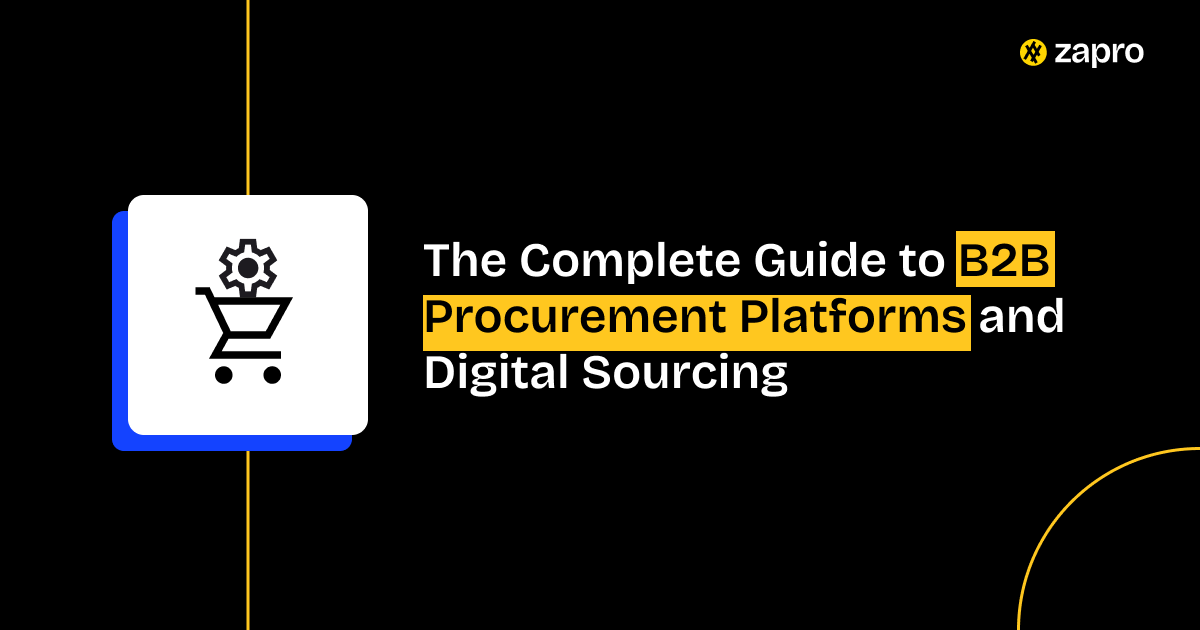Introduction
Normally, procurement companies are caught up in delayed approvals, invoice mismatches, never-ending email follow ups, manual data entry struggles, and zero visibility. Averagely, this affects their annual revenue by 3-5% and that’s a big number—millions of dollars gone each year because of a poor procurement process.
As a matter of fact, the year 2025 is witnessing a major transformation in procurement. With the rise of digital procurement solutions and AI procurement automation, organizations can automate tasks and stay focused on business without worrying about errors and delays.
Let AI handle the heavy lifting for the companies!
Here we are decoding essential questions that come to your mind about procurement automation:
- What digital procurement solutions are and why they matter
- How AI is reshaping the P2P (procure-to-pay) process
- The benefits organizations are seeing with automation
- Implementation best practices and future trends
As we try to decode all the essential things, we will also furnish you with tips as to how Zapro.ai can lead the way in procurement automation, quick deployment, and AI-powered stunning features.
The Current State of Procurement Challenges
In many companies, procurement takes the back seat while sales and marketing is given all the attention. However, there is a dire need to pay attention to the one that gets the least attention – Procurement, as it can change the course of the business to enjoy big profits. Let’s look at the main challenges businesses face with traditional, manual procurement processes:
Manual processes slow everything down
Manual processes such as spreadsheets, email approvals, phone call follow ups, and manual enrolling of vendors triggers delayed approvals, unhappy vendors, and duplication of work.
Hidden costs pile up
Budgets are often drained by improper spends that are identified in the month-ends. It is also affected by factors such as a missed discount, a late payment fee, or a small error in invoice matching.
Time-consuming P2P cycles
There is no room for strategic work when tasks from raising a purchase requisition to payment is handled manually. This can go on for weeks because the system heavily relies on manual approvals and email followups.
Poor compliance and visibility
CFOs do not have real-time data on what is coming in and what is going out. Tracking the spend is a pain-staking task as it requires everyone’s coordination. Besides these, enforcing budgets and maintaining compliance goes for a toss. This also reduces negotiation power with vendors.
These are the solid reasons why businesses are opting to digital solutions for procurement. An AI-powered system can help them address inefficiencies, gain visibility, and drive measurable ROI.

Only about one-third of CEOs have an operating and business model fit for an AI-driven world.
– David Furlonger, Gartner Research, from the 2025 Gartner CEO
What Are Digital Procurement Solutions?
Technology platforms that automate and optimize the procurement cycle from sourcing and vendor management to purchase order automation and payments are referred to as digital procurement solutions.
Digital procurement solutions do away with the waiting time of manual approvals and maintaining spreadsheets. While the overall efficiency is improved, it also provides real-time view at any stage of the procurement activity under a single-pane of glass.
Learn about Best Purchase Order Software of 2025
Core components of modern digital procurement systems:
- Automated workflows – routing approvals and generating POs without human delays
- Vendor management automation – onboarding, compliance, and performance tracking in one place
- Procure-to-pay automation – covering requisitions, invoices, and payments end-to-end
- Spend analytics – real-time dashboards to monitor budgets and forecast demand
- Integrations – connecting seamlessly with ERP systems like SAP, Oracle, or NetSuite
Traditional vs digital procurement:
- Traditional: Manual, paper-based, error-prone, slow
- Digital: Automated, AI-powered, transparent, fast
Zapro is just one example of a new digital sourcing platform. It provides AI-powered workflows, over 300 integrations, and quick implementation so that companies can achieve results in days, not months.
Role of AI in Transforming Procurement

The 2025 buzzword is AI procurement, and it’s not hype. AI is fundamentally reshaping how organizations buy, manage suppliers, and control spend.
Here’s how:
1. Smart spend analysis
Spend data is automatically analyzed by AI tools, identify patterns, and recommend areas of potential savings. CFOs are no longer dependent on monthly reports; they receive real-time insights.
2. Predictive analytics
Rather than responding to shortages or delays, AI predicts demand and raises warnings about potential problems before they materialize. This renders procurement proactive rather than reactive.
3. Automated vendor selection
AI analyzes suppliers for performance, cost, and risk considerations, making it simple to select the best partner without spending hours manually searching.
4. Smart contract management
AI reads contracts for compliance, renewal dates, and risky provisions, cutting legal exposure.
5. Risk mitigation
From supply chain disruption to vendor fraud, AI can identify red flags ahead of time and recommend alternative courses of action.
Zapro highlight: Zapro speeds up processing by up to 75% with AI-driven invoice matching, and even flags discrepancies that may signal fraud or error.
Transform P2P with the Power of AI and Zapro.

The Complete P2P Automation Journey
The automated P2P process is where most organizations see the biggest wins. Let’s walk through what it looks like:
- Purchase requisition automation
Employees raise requests in a guided intake system, ensuring accuracy from the first step. - Approval workflow optimization
AI routes approvals automatically, so managers don’t waste time on emails or signatures. - Intelligent purchase order generation
POs are created instantly with built-in budget checks and compliance rules. - Receipt and invoice matching
Invoices are matched against POs and receipts automatically, reducing manual errors. - Payment processing automation
Payments are scheduled on time, with dynamic discounting opportunities applied automatically. - Performance analytics
Every transaction feeds into dashboards, giving finance leaders a clear picture of spend.
Zapro Case Study: A mid-sized tech company cut procurement cycle times by 60% after implementing Zapro’s automated P2P process.
Benefits of Implementing Digital Procurement Solutions
Companies using digital procurement solutions are experiencing tangible, quantifiable results:
- Cost savings: They save 20–40% in costs through automation, improved compliance, and more intelligent vendor negotiations.
- Quicker cycles: P2P cycle times are cut by 50–80%, so employees don’t need to wait as long for approvals.
- Improved compliance: Audit-ready trails and policy enforcement through automation minimize fraud or regulatory risks.
- Improved supplier relationships: Vendors are paid in a timely manner, performance is monitored fairly, and coordination enhances.
- Improved visibility: CFOs have real-time dashboards reflecting where money is actually being spent.
With Zapro, clients have reported 3–6x ROI in the first year alone.
Implementation Best Practices
Rolling out a digital procurement system isn’t just about software—it’s also about people and processes. Here are best practices for success:
- Plan with stakeholder buy-in
Engage CFOs, procurement teams, and department heads early to align goals. - Data migration and integration
Cleanse supplier and spend data before migrating, and ensure smooth integration with existing ERP systems. - Change management
Communicate clearly with teams, highlight benefits, and address resistance to change. - Training and adoption
Provide hands-on training and user-friendly guides to boost adoption.
Zapro Support: Zapro offers FastTrack implementation and dedicated support, helping businesses go live in as little as 5 days.
Future Trends in Procurement Technology
As we look beyond 2025, several trends will continue to shape procurement:
- Smarter AI capabilities – from predictive supply chain planning to autonomous negotiations
- Blockchain integration – enhancing contract security and supplier transparency
- Sustainable procurement – monitoring ESG performance and sourcing ethically
- Advanced analytics – richer spend insights through AI and machine learning
Zapro Roadmap: Look out for AI-powered anomaly detection, sustainability monitoring, and richer ERP-native integrations.
Conclusion & Next Steps
Procurement has moved far beyond paperwork and chasing approvals. With digital procurement tools, businesses are saving money, time, and having complete control over their spend.
If you wish to optimize your automated P2P process or implement a digital sourcing platform for end-to-end procurement, AI is the doorway to unlocking efficiency and strategy.

Step into the Future of Procurement with Zapro.
AI automation makes your P2P faster, smarter, and error-free.
FAQs
1. What are the differences between digital procurement solutions and conventional procurement practices?
Conventional procurement is based on manual processes, whereas digital procurement solutions process using AI, enhancing speed, compliance, and transparency.
2. What is the general timeframe to implement an automated P2P process in an organization?
Implementation ranges from 5 days (with Zapro) to 6 months for large enterprise platforms.
3. What are the most important things to consider when choosing a digital sourcing platform?
Check for guided intake, automated POs, vendor management automation, spend analytics, and ERP integration.
4. Can AI procurement automation be integrated into existing ERPs such as SAP or Oracle?
Yes. Most current digital procurement systems—including Zapro—integrate perfectly with ERPs such as SAP, Oracle, and NetSuite.
5. Where does the implementation time and ROI of Zapro’s digital procurement system stand compared to other solutions?
Zapro has the shortest implementation (5 days), modular functionality, and achieves 3–6x ROI within the first year, one of the highest-value offerings in the industry.
Don’t miss our weekly updates
We’ll email you 1-3 times per week—and never share your information.

 Healthcare
Healthcare Financial Services
Financial Services Technology
Technology Venture Capitalist
Venture Capitalist Chief Procurement Officer
Chief Procurement Officer Chief Financial Officer
Chief Financial Officer




